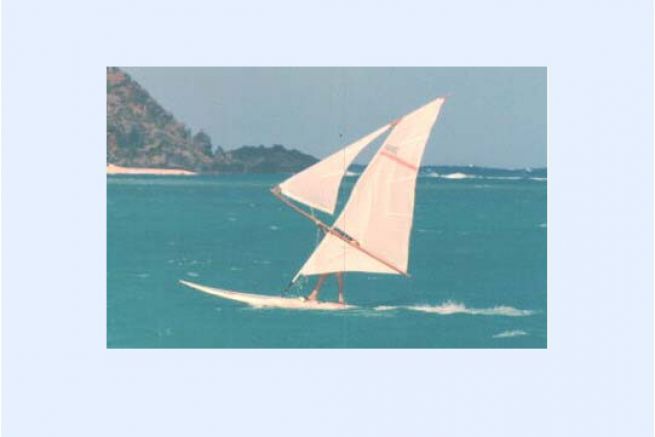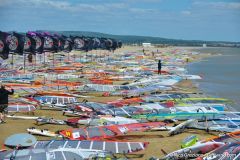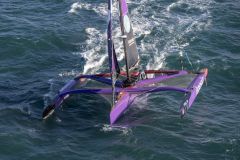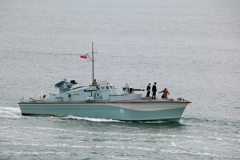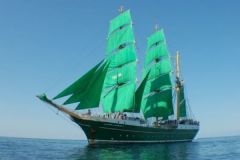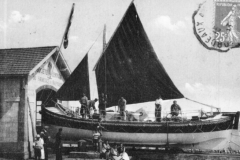The first windsurfing boat arrived in France in the early 1970s. In 1984, when she appeared at the Olympic Games, she was already ultra populaire?! Easy to transport, affordable, it guarantees thrills and sensations and has already been sold at 120?000 exemplaires?!
However, it is necessary to go back some twenty years before for one of the most popular leisure activities of our time to emerge.
When a kid has fun
Peter Chilvers was only a child when, in the early 1960s, he developed a windsurfing concept for fun. The young Englishman is a fan of the dinghy and his invention is purely playful. His board has a kind of teak boom, a universal joint at the foot of the mast and a maneuverable rudder at the foot, which he eventually did not use, preferring the wind to choose his course. This invention fell into oblivion and no one heard about it.
A door and a sail
A few years later, in 1964, the American Newman Darby, who was boating on a lake in Pennsylvania, tried to create a "hand" boat propelled by the force of the wind. He came up with the idea of creating the first windsurfing board by combining a square sail and a mast on a board with the false appearance of a rectangular wooden door that will act as a float.
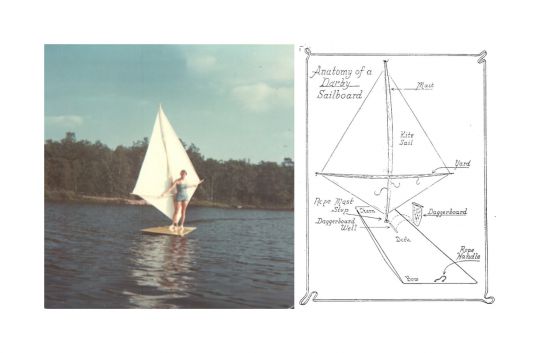
This model, 3 m long and 90 cm wide, has a mast with a swivel that only orients laterally and a sail that is located on the back of the sailor. For two years, with the help of his wife and brother, he worked on his concept with the idea of filing a patent. In 1964, he founded his company, the Darby Industry, and launched the "sailboard" on the market. More copies of the board are produced than are sold and the company is in danger of losing it. At the end of 1965, the patent was abandoned and the concept was forgotten.
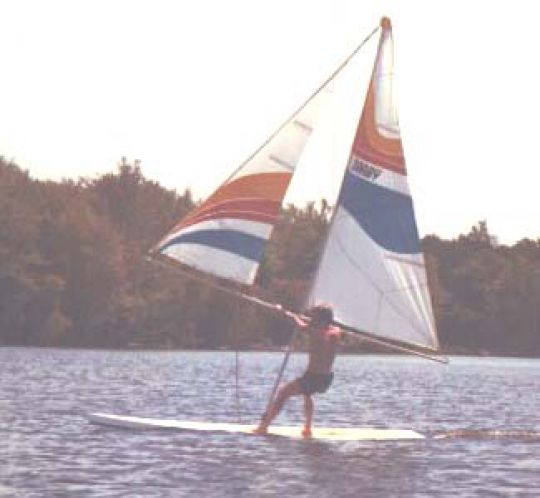
The birth of "windsurfing"
Four years later, in 1968, two Californians, Jim Drake and Hoyle Schweitzer, developed windsurfing as we know it today. This windsurfing board is already very accomplished because they have solved the main technical obstacles. These two water sports enthusiasts - sailing for the first and surfing for the second - are developing the universal joint system called diabolo, which connects the board to the sail.
The aeronautical engineer and the businessman imagine this system while working on the principle of tilting a sail from front to back, which is essential to steer the windsurfing board. And thanks to the diabolo system, the rigging can be adjusted in all directions.
The two friends also developed the boom, the double boom that surrounds the sail and allows it to be stretched, but also to hold it upright and orientate it to steer. It takes its name from the bone that inspired its design, the "furcula", the V-shaped bone found on chickens, for example.

The windsurfer's patent was registered on 27 March 1968 and accepted in 1970. It is therefore a board (a float) on which is fixed an articulated rigging via a diabolo system with a sail and a boom. A retractable daggerboard is installed under the board, in its centre, to effectively climb upwind. Finally, to easily lift the sail that had fallen into the water, the inventors added a piece that would later be called the "uphaul" or "watchdog".
The two partners create Windsurfing International. It is the extraordinary emergence of windsurfing (inspired by the name of the famous board). The company wishes to export itself and also files patents in Europe. But for lack of sufficient resources, it chose England and Germany for their trade relations with the United States, to the detriment of France.
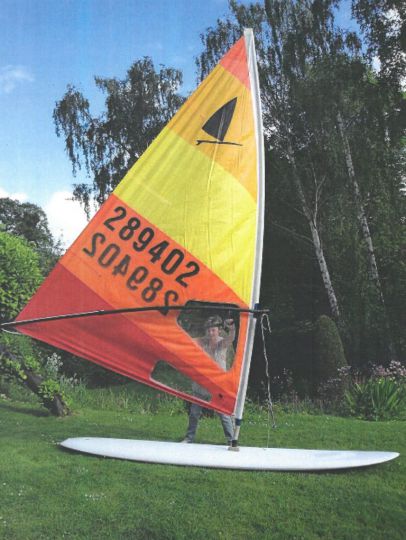
It was not until 1973 and the Paris Boat Show at the CNIT that the first windsurfing event was discovered in France and 1974 that its import into our country began. If it is on our coasts that this sport will develop the fastest, it is a Breton - Patrick Carn - who will import it for the first time in France.
